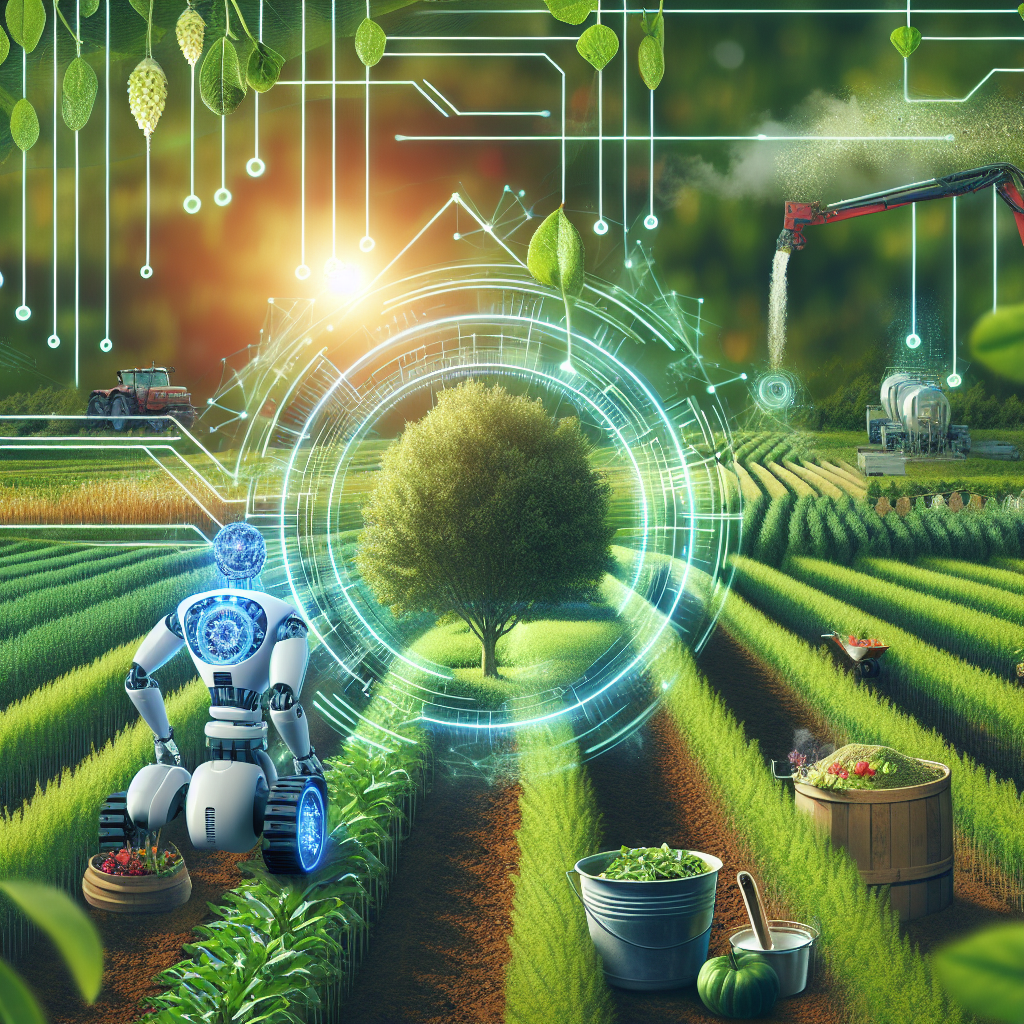In recent years, the integration of artificial intelligence (AI) technology in agroforestry has become a game-changer for the farming industry. Agroforestry is a sustainable agricultural practice that combines trees and shrubs with crops and/or livestock on the same piece of land. This approach not only increases biodiversity and resilience but also helps in mitigating climate change and promoting sustainable land management.
AI technology has the potential to revolutionize agroforestry by improving efficiency, productivity, and sustainability. By utilizing AI-powered tools and systems, farmers can make data-driven decisions, optimize resource management, and enhance crop yields while reducing environmental impact. In this article, we will explore the role of AI in agroforestry and its benefits for sustainable farming practices.
Benefits of AI in Agroforestry:
1. Precision Agriculture: AI technology enables farmers to collect and analyze vast amounts of data to make precise decisions about planting, irrigation, fertilization, and pest management. By using sensors, drones, and satellite imagery, farmers can monitor crop health, soil moisture levels, and weather patterns in real-time. This information helps in optimizing resource use and maximizing yields while minimizing waste.
2. Disease and Pest Management: AI-powered tools can detect early signs of diseases and pests in crops through image recognition and predictive modeling. Farmers can take timely actions to prevent outbreaks and minimize crop losses. AI algorithms can also recommend the most effective and sustainable pest control methods, reducing the need for chemical pesticides.
3. Climate Resilience: Climate change poses a significant threat to agriculture, affecting crop yields and food security. AI technology can help farmers adapt to changing climate conditions by providing insights into drought-resistant crops, optimal planting times, and sustainable land management practices. By using AI-driven climate models, farmers can make informed decisions to mitigate risks and improve resilience.
4. Soil Health Monitoring: Soil health is critical for sustainable agriculture, as it affects crop growth, nutrient availability, and water retention. AI tools can analyze soil samples and provide recommendations for soil fertility management, erosion prevention, and organic matter enrichment. By monitoring soil health continuously, farmers can maintain productive and healthy soils for long-term sustainability.
5. Agroforestry Planning and Design: AI algorithms can assist farmers in designing agroforestry systems that optimize biodiversity, ecosystem services, and productivity. By analyzing environmental factors, species interactions, and economic considerations, AI models can recommend the most suitable tree-crop combinations and spatial arrangements. This helps in maximizing the benefits of agroforestry while minimizing risks and trade-offs.
FAQs:
1. How does AI technology benefit agroforestry?
AI technology benefits agroforestry by improving efficiency, productivity, and sustainability. By using AI-powered tools and systems, farmers can make data-driven decisions, optimize resource management, and enhance crop yields while reducing environmental impact. AI technology enables precision agriculture, disease and pest management, climate resilience, soil health monitoring, and agroforestry planning and design.
2. What are some examples of AI applications in agroforestry?
Some examples of AI applications in agroforestry include:
– Precision agriculture: Using sensors, drones, and satellite imagery to monitor crop health, soil moisture levels, and weather patterns in real-time.
– Disease and pest management: Detecting early signs of diseases and pests in crops through image recognition and predictive modeling.
– Climate resilience: Providing insights into drought-resistant crops, optimal planting times, and sustainable land management practices.
– Soil health monitoring: Analyzing soil samples and providing recommendations for soil fertility management, erosion prevention, and organic matter enrichment.
– Agroforestry planning and design: Designing agroforestry systems that optimize biodiversity, ecosystem services, and productivity.
3. How can farmers adopt AI technology in agroforestry?
Farmers can adopt AI technology in agroforestry by:
– Investing in AI-powered tools and systems for data collection, analysis, and decision-making.
– Collaborating with AI experts, researchers, and technology providers to develop customized solutions for their specific needs.
– Participating in training programs, workshops, and webinars to learn about the latest AI applications and best practices in agroforestry.
– Networking with other farmers, agroforestry practitioners, and stakeholders to share experiences, exchange knowledge, and promote innovation in sustainable agriculture.
4. What are the challenges of implementing AI in agroforestry?
Some challenges of implementing AI in agroforestry include:
– Cost: AI technology can be expensive to acquire, install, and maintain, especially for small-scale farmers and resource-constrained communities.
– Data privacy and security: Collecting and storing sensitive data, such as farm records, soil samples, and crop images, raises concerns about privacy and cybersecurity risks.
– Skills and capacity: Farmers may lack the technical skills, knowledge, and resources to use AI tools effectively and integrate them into their farming practices.
– Adoption and acceptance: Farmers may be hesitant to adopt new technologies due to perceived risks, uncertainties, and cultural barriers.
In conclusion, AI technology has the potential to transform agroforestry into a more sustainable, efficient, and resilient farming system. By harnessing the power of AI for precision agriculture, disease and pest management, climate resilience, soil health monitoring, and agroforestry planning and design, farmers can improve productivity, reduce environmental impact, and promote long-term sustainability. With the right support, training, and collaboration, farmers can harness the benefits of AI in agroforestry to address the challenges of modern agriculture and build a more sustainable future for food production.

